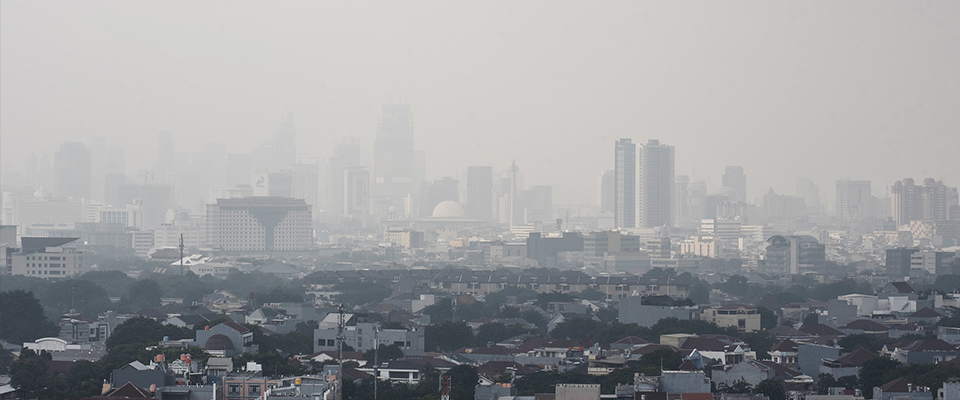
Berikut adalah beberapa mitos dan fakta menurut Vital Strategies, yang perlu dipahami untuk dapat mengungkap tabir polusi udara:
1. Mobil adalah sumber utama polusi udara
Meskipun mobil sering dianggap sebagai sumber utama polusi udara, masih banyak sumber emisi polusi udara di Jakarta termasuk pabrik perakitan, pembangkit listrik, pekerjaan konstruksi, dan pembakaran biomassa. Bahkan, studi awal telah menunjukkan bahwa kendaraan hanya berkontribusi terhadap 30% polusi udara di Jakarta. Dinas Lingkungan Hidup Jakarta (DLH) dan mitra saat ini sedang melaksanakan studi sumber polusi udara di wilayah Jakarta sebagai bagian dari Road Map, untuk memberikan pemahaman yang lebih baik mengenai sumber-sumber polusi udara. Hasilnya akan segera dipublikasikan tahun ini.
2. Polusi udara dapat menempuh jarak yang jauh
Polusi udara tidak pernah menetap di tempat polusi dihasilkan. Polutan, terutama partikel halus, dapat terangkut oleh angin dan tersebar di lapisan stratosfer, dan membawa polutan dari daerah pedesaan ke kota-kota seperti Jakarta, dan sebaliknya. Contoh polusi udara yang menempuh jarak yang jauh adalah kabut lintas batas yang disebabkan oleh kebakaran hutan di Indonesia yang memengaruhi hingga ke negara-negara tetangga seperti Malaysia, Singapura dan Brunei.
3. Masker dan filter udara akan melindungi saya dari polusi udara.
Masker kertas sederhana umumnya tidak efektif untuk mengurangi paparan polusi. Masker yang didesain lebih baik seperti model N95 hanya dapat memberi sedikit perlindungan ketika dikenakan, biasanya karena tidak pas di muka. Filter udara harus sering diganti agar tetap efektif, dan seringkali berbiaya mahal. Pada akhirnya, tidak ada masker wajah atau filter udara yang akan menyaring seluruh polutan udara, terutama partikel ultra halus (berdiameter 0,3 mikron). Solusi yang lebih baik adalah menghilangkan sumber emisi polusi udara.
4. Jika udara tidak berkabut berarti aman
Meskipun polusi udara dapat membentuk kabut dan asap yang tampak jelas ketika konsentrasinya tinggi, kita sebenarnya sudah terpapar polusi udara dengan konsentrasi rendah yang tak terlihat dan tak berbau. Tidak ada tingkat polusi udara yang aman yang tidak menimbulkan dampak negatif terhadap kesehatan.
5. Anda bisa membiasakan diri dengan polusi udara
Terlepas dari sumbernya, polusi udara memiliki dampak yang jelas dan sangat berbahaya bagi kesehatan manusia. Paparan terhadap polusi udara tingkat lanjut (khususnya PM2.5) dapat mengakibatkan batuk dan sesak napas, kanker paru, stroke dan penyakit jantung. Semakin sering seseorang terpapar polusi udara, mereka semakin berisiko terkena penyakit serius.
6. Mengendalikan polusi udara dapat menghambat pertumbuhan ekonomi
Dampak kesehatan polusi udara terhadap penduduk Jakarta tidak dapat diabaikan. Di tahun 2016, peningkatan paparan polusi udara telah mengakibatkan 6,1 juta kasus penyakit kardio-respiratori di Jakarta (sama dengan 12 kasus per menit), dengan perkiraan kerugian mencapai Rp 51,2 triliun (USD 3,9 miliar). Beban ekonomi aktual akibat kualitas udara yang buruk dapat lebih tinggi jika kerugian akibat kematian dini dan penurunan produktivitas juga dihitung. Meskipun melenyapkan polusi udara dapat menimbulkan beban tambahan, biaya ini telah dibuktikan akan otomatis terganti oleh manfaat ekonomi dan penghematan layanan kesehatan, umur lebih panjang serta peningkatan hasil sosial dan pembangunan.
Polusi udara harus segera diatasi. Untuk tahu lebih banyak tentang mitos dan fakta polusi udara, beserta referensi untuk fakta-fakta yang disebutkan di atas, kunjungi https://environmentalhealth.vitalstrategies.org/.
Related tags: